
Kamen rođenja u ožujku: Potpuni vodič + alternativno kamenje
Za rođendane koji započinju proljetnu sezonu, bebe rođene u ožujku imaju dva službena kamena rođenja. Dva kamena rođenja za ožujak su akvamarin i krvavi kamen, oba s kontrastnim izgledom, ali jednako bogatom predajom.
Mjesec ožujak nazvan je po Marsu, rimskom bogu rata, jer su tada rimski vojnici nastavljali vojne kampanje nakon što su ih odgodili za zimu. Tehnički, ožujak (ili Martius) bio je prvi mjesec u rimskom kalendaru prije nego što su dodani siječanj i veljača kako bi se bolje uskladili s lunarnom godinom.
Osim povratka u bitke, drevni su se ljudi vratili i poljoprivredi i putovanjima, s proljetnom ravnodnevnicom 20. ožujka (ili jesenskom ravnodnevnicom na južnoj hemisferi). Održavali su se mnogi festivali, a većina je slavila Mars ili novu godinu.
Danas ožujak simbolizira nove početke, ponovno rođenje i nadu u budućnost. Osim toga, mjesec slavi jednakost kao Mjesec ženske povijesti, te Međunarodni dan žena 8.
Nakon što smo utvrdili značenje ožujka, zaronit ćemo u značenja, povijest i svojstva dvaju kamena rođenja za ožujak, krvavog kamena i akvamarina .
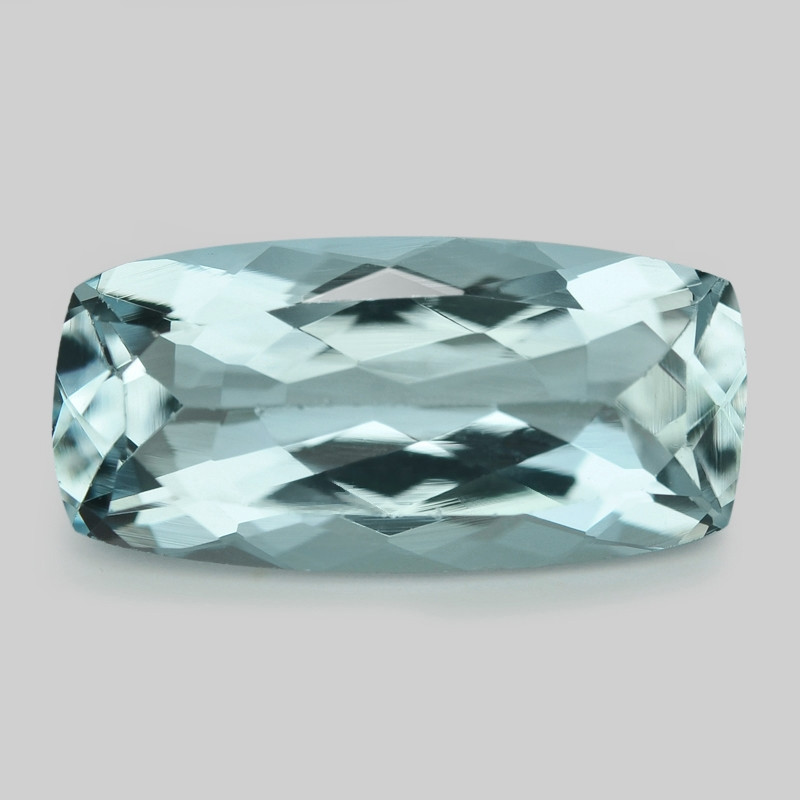
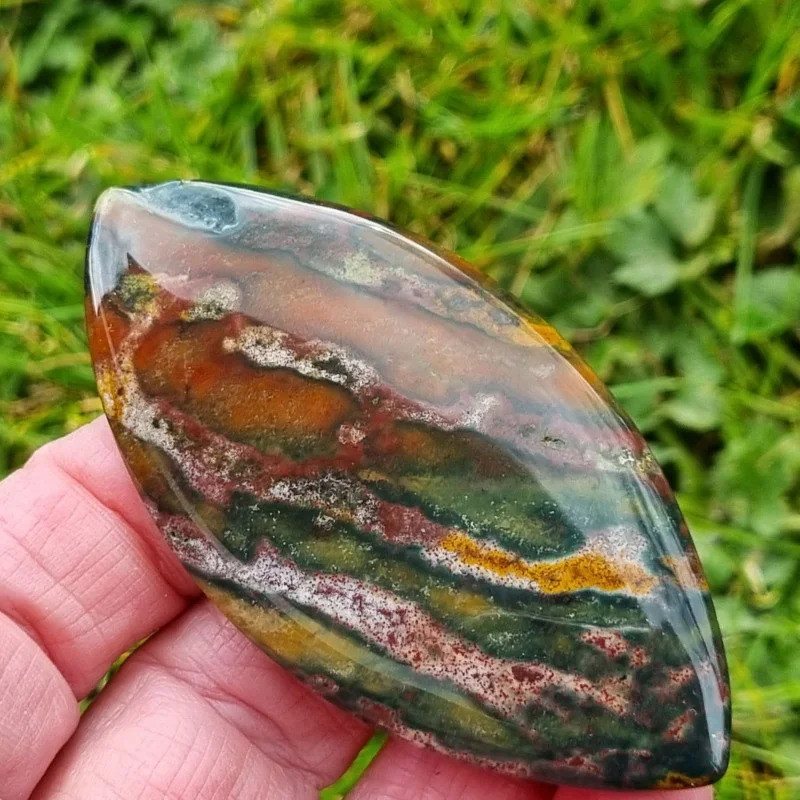 Na gornjoj slici: Fasetirani dragi kamen akvamarin (gore), kabošon krvavog kamena (dolje)
Na gornjoj slici: Fasetirani dragi kamen akvamarin (gore), kabošon krvavog kamena (dolje)
Koji su kameni rođenja za ožujak?
Ožujak ima dva tradicionalna kamena rođenja: akvamarin i krvavi kamen. Ovi poludragi kameni su jednako legendarni, ali s oštrim kontrastima:
Boja : Akvamarin ima meke, morskozelene do nebeskoplave nijanse; krvavi kamen ima tamnozelenu boju s grimiznim mrljama.
Prozirnost : Akvamarini su obično prozirni; krvavi kameni su obično neprozirni.
Oblici dragog kamenja : Akvamarini su obično fasetirani ; krvavi kameni se obično brušeni u kabošone .
Godišnjice braka : Akvamarin je tradicionalni dragulj za 18. godišnjicu braka , a krvavi kamen je alternativni dragulj za 14. godišnjicu.
Ali zašto postoje dva kamena rođenja za ožujak? Ukratko: povijest!
Podrijetlo kamenja rođenja u ožujku
Tradicije o kamenju rođenja sežu u 1. stoljeće nove ere , kada su povjesničari povezali biblijske popise od 12 kamenja s 12 mjeseci u godini i 12 znakova zodijaka.
U ranim popisima kamenja rođenja, krvavi kamen bio je jedini kamen rođen u ožujku.
Međutim, točna identifikacija dragulja nije se dugo vremena pojavila, pa se o stvarnom kamenju u drevnim tekstovima raspravlja. Osim toga, ljudi nisu počeli nositi kamenje rođenja za svoj osobni mjesec rođenja sve dok draguljari u Njemačkoj ili Poljskoj nisu počeli prodavati nakit s kamenjem rođenja oko 16. stoljeća .
Standardizirani popisi koje danas poznajemo započeli su oko 19. stoljeća, kada je Tiffany & Co. 1870. objavio pjesme o kamenju rođenja, a pripisuju ih anonimnom gregorijanskom autoru.
Evo ožujske pjesme iz te brošure:
„Od one koja je u ožujku rođena
Ne smije se nositi nijedan dragulj osim Krvavog kamena
Oni će osigurati njezinu postojanost
Pravo prijateljstvo i vjernost."
Nacionalno udruženje draguljara (sada Jewellers of America) izradilo je standardizirani popis kamenja rođenja 1912. godine . Vijeće američke industrije nakita ažuriralo je popis 1952. godine , a pojavili su se i drugi (uglavnom slični) popisi.
Na tim popisima, akvamarin je naveden kao alternativa krvavom kamenu.
Danas, britanski i američki popisi kamenja rođenja daju prednost akvamarinu nad krvavim kamenom, ali i dalje navode oba.
Dakle, je li kamen rođenja za ožujak akvamarin ili krvavi kamen? To je oboje! Krvavi kamen biste mogli nazvati "tradicionalnim" kamenom rođenja, a akvamarin "modernim" kamenom rođenja.
Kad smo već kod tradicije, pogledajmo povijest ova dva dragulja.
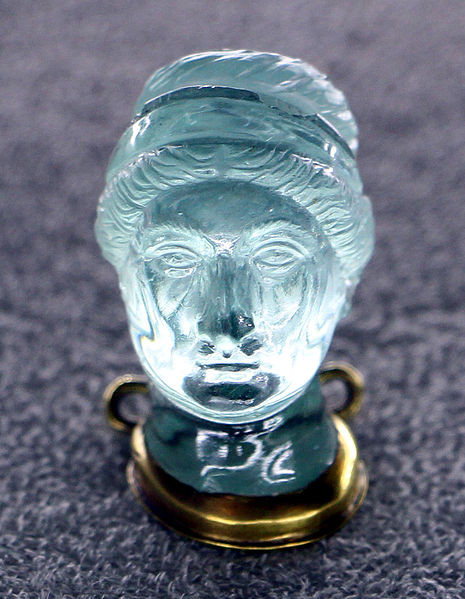 Na gornjoj slici: Antička umjetnost, glava carice u akvamarinu, možda Matidije, restaurirana u zlatu na dnu; Datira iz 2. stoljeća (opis preveden s talijanskog) | Zasluge za sliku: Sailko, CC-BY-SA-3.0
Na gornjoj slici: Antička umjetnost, glava carice u akvamarinu, možda Matidije, restaurirana u zlatu na dnu; Datira iz 2. stoljeća (opis preveden s talijanskog) | Zasluge za sliku: Sailko, CC-BY-SA-3.0
Povijesni i kulturni kontekst kamenja rođenja u ožujku
Jedna kvaliteta koju dijele dva ožujska kamena rođenja je bogata, opsežna povijest puna legendi i predaja!
Povijesna upotreba akvamarina
Naziv akvamarin dolazi od latinskih riječi aqua , što znači „voda“ i marine , što znači „more“, zbog sličnosti s morskom vodom. Iako je ovaj nadimak nastao 1609. godine, ranije nazvan „morskozeleni beril “ bio je poznat stoljećima.
Drevni su vjerovali da kamen rođenja za ožujak pruža zaštitu na moru, često su ga urezivali u talismane. Legende o podrijetlu akvamarina kretale su se od toga da je izgubljeno blago sirena do toga da ga je stvorio bog mora Posejdon (ili Neptun).
Mnogi drevni narodi povezivali su akvamarin s radošću mladosti i strašću mlade ljubavi.
Tijekom srednjeg vijeka vjerovalo se da akvamarin štiti od trovanja (što ga je učinilo popularnim među kraljevskom obitelji) i olakšava psihičke sposobnosti.
Kršćani su povezivali akvamarin sa svetim Tomom, zaštitnikom pomoraca. Neki su također vjerovali da dragulj potiče sretne brakove.
Budisti su slično vjerovali da akvamarin označava ljubav. Jedna tradicija u Indiji uključuje darivanje nakita od akvamarina mladencima.
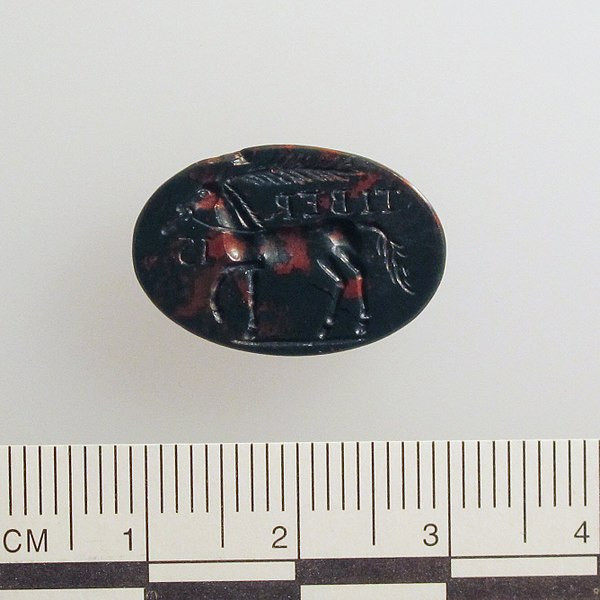 Na gornjoj slici: Rimski carski heliotropni intaglio s anguipima u obliku petoglavaca (božanstvo sa zmijama umjesto nogu), datiran iz 3. stoljeća poslije Krista, izložen u Metropolitanskom muzeju umjetnosti | Zasluge za sliku: Met Museum, Javna domena
Na gornjoj slici: Rimski carski heliotropni intaglio s anguipima u obliku petoglavaca (božanstvo sa zmijama umjesto nogu), datiran iz 3. stoljeća poslije Krista, izložen u Metropolitanskom muzeju umjetnosti | Zasluge za sliku: Met Museum, Javna domena
Krvavi kamen u povijesnim i mističnim kontekstima
Naziv "krvavi kamen" odnosi se na njegove tipične krvavocrvene uzorke nalik kapljicama.
Međutim, starogrčki naziv bio je " heliotrop ", izveden od riječi helios , što znači "sunce", i trepo , što znači "okret", jer je kamen izgledao potpuno crveno pod zalazećim suncem ili kada se postavio pod vodu na izravnu sunčevu svjetlost.
Drevni su koristili krvavi kamen u praktične i mistične svrhe.
Babilonci su izrađivali pečate od krvavog kamena, a plemići su nosili prstenje s pečatima od krvavog kamena za pečatiranje važnih dokumenata. Mezopotamci i Babilonci također su koristili krvavi kamen za proricanje, dok su Egipćani, Rimljani i Grci vjerovali da ih kamen rođenja u ožujku čini jačima u borbi ili sportu.
Starorimski učenjak Plinije Stariji napisao je da su krvavi kameni ogledala Sunca, omogućujući vidjeti pomrčine Sunca. Drugi starorimski autor, Damigeron, napisao je da krvavi kameni predviđaju budućnost i „ako se stave u srebrnu posudu punu vode i postave nasuprot Suncu, okreću se prema njemu i čine ga kao da je krvav i oblačan.“
Krvavo kamenje s ugraviranim suncima ili bakljama često su nosili oslobođeni robovi kako bi označili svoje oslobođenje.
Uobičajeni nadimak bio je " kamen mučenika ", što je na kraju dovelo do naziva "krvavi kamen".
Kršćanska legenda nastala je o krvavom kamenu koji je nastao prilikom raspeća Isusa Krista. Priča kaže da je kamen nastao kada je Kristova krv pala na zelenu zemlju ili zeleni jaspis ispod križa (priče se razlikuju). Stoga su neki vjerovali da kamen liječi probleme povezane s cirkulacijom krvi.
Do srednjeg vijeka , veza s mučeništvom se nastavila s skulpturama od krvavog kamena koje prikazuju mučeničke činove i amuletima za koje se vjerovalo da predstavljaju Kristovu žrtvu.
Srednjovjekovni Europljani izrađivali su eliksire od krvavog kamena za liječenje krvarenja, tumora i ugriza zmija. U Indiji se prašak od krvavog kamena koristio kao afrodizijak.
Danas je Indija jedan od glavnih izvora krvavog kamena, što nas dovodi do podrijetla ovih ožujskih kristala!
 Na slici gore: Grubi akvamarin
Na slici gore: Grubi akvamarin
Geološko podrijetlo i svojstva kamenja rođenja u ožujku
Akvamarin je varijanta berila. Beril je prilično izdržljiv, s tvrdoćom od 7,5 do 8 na Mohsovoj ljestvici . Ovi minerali obično se formiraju u granitnim pegmatitima koji sadrže beril.
Prisutne nečistoće dovode do raspona boja, poput željeznog ili željeznog željeza koje stoji iza plavih do zelenih nijansi akvamarina. U međuvremenu, paralelne ili okomite skupine šupljih cjevastih inkluzija mogu omogućiti blagu čaroban sjaj (efekt „mačjeg oka“) ili asterizam (efekt „zvijezde“). Neki od najboljih akvamarina dolaze iz Sibira i Brazila.
Krvavi kamen je varijanta kalcedona ili mikrokristalnog kvarca. Neki klasificiraju krvavi kamen kao vrstu jaspisa , podkategorije kalcedona za neprozirno, uzorkovano kamenje.
Nastanak ovog kamena rođenja za ožujak sličan je ostalim kvarcnim kamenjem, ali crvene mrlje potječu od uključivanja hematita . Većina krvavih kamenja draguljarske kvalitete dolazi iz Indije.
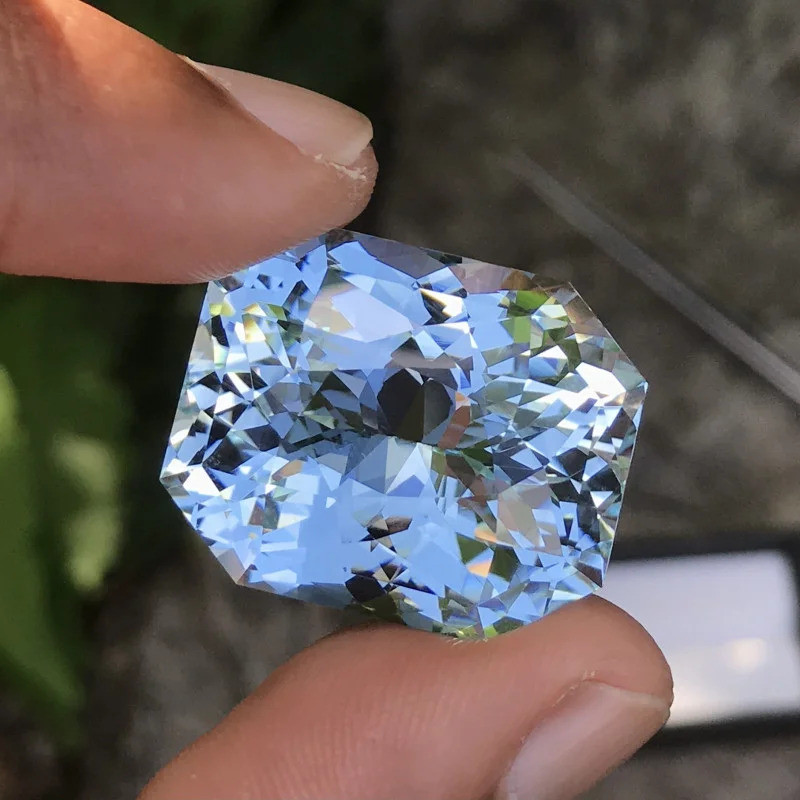 Na slici gore: Fasetirani plavi akvamarin Santa Maria
Na slici gore: Fasetirani plavi akvamarin Santa Maria
Nijanse plave i zelene: Nježna paleta akvamarina
Iako se akvamarin kreće samo od plave do zelene, njegova paleta boja je iznenađujuće raznolika. Više vrijednosti idu čistijim, zasićenijim plavim nijansama, ali obično su boje ovog kamenja rođenog u ožujku blijedo zelenkastoplave.
Određene boje imaju različite trgovačke nazive:
Santa Maria : Srednje tamna, visoko zasićena plava; otkrivena u brazilskom rudniku Santa Maria de Itabira
Espirito Santo : Manja zasićenost plave boje od Santa Marie, ali jedinstven sjaj i duboka boja
Maxixe : Vrlo tamnoplava boja; Rijetko se nalazi u prirodi u brazilskom rudniku Maxixe; Obično se proizvodi nestabilnim zračenjem (sklon blijeđenju)
Nampula : Plavo jaje crvendaća; pronađeno u pokrajini Nampula u Mozambiku
Pedra Azul : Ledeno plava; Nalazi se u brazilskom okrugu Pedra Azul
Budući da su čistije plave boje vrijednije, mnogi akvamarini se toplinski obrađuju kako bi se uklonili zeleni podtonovi.
Kako sada izgleda krvavi kamen?
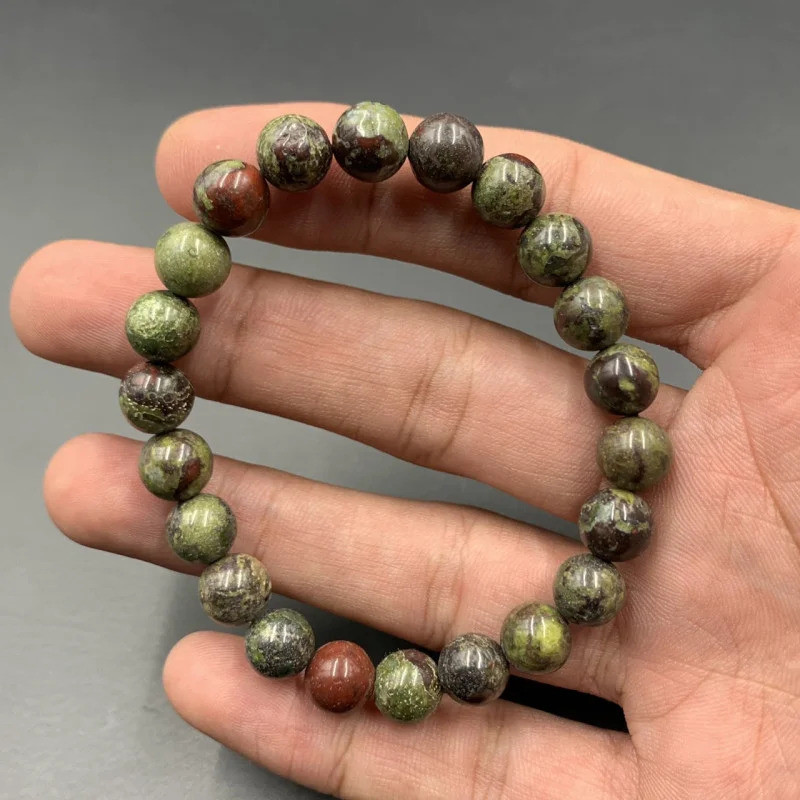
Mistika Krvavog kamena: Duboko zelene i crvene mrlje
Krvavi kamen se tehnički smatra vrstom plazme, poluprozirnom do neprozirnom zelenom varijantom kalcedona sa žutim, bijelim ili crvenim mrljama.
Klasični izgled krvavog kamena za rođenje je šumsko zelene boje s crvenim mrljama. Mrlje, a ponekad i pruge na krvavom kamenu mogu biti i narančaste, smeđe, bijele, žute ili kombinacija ovih zemljanih nijansi.
Osim inkluzija crvenog hematita, druge mineralne inkluzije koje stoje iza boje krvavog kamena uključuju amfibol, klorit i piroksen.
Neki klasificiraju "heliotropne" krvne kamene kao prozirne s crvenim mrljama, a "plazma" krvne kamene kao neprozirne s vrlo malo crvenih mrlja.
Neke varijacije s trgovačkim nazivima:
Krvavi jaspis : Pjegavo crvenkasto-crne boje s bijelim žilicama
Fancy Jasper : Prevladavajuće boje osim zelene i crvene ili razne kombinacije boja
Osim izgleda, još jedna razlika između akvamarina i krvavog kamena je njihovo duhovno značenje i upotreba kao iscjeliteljskog kamenja .
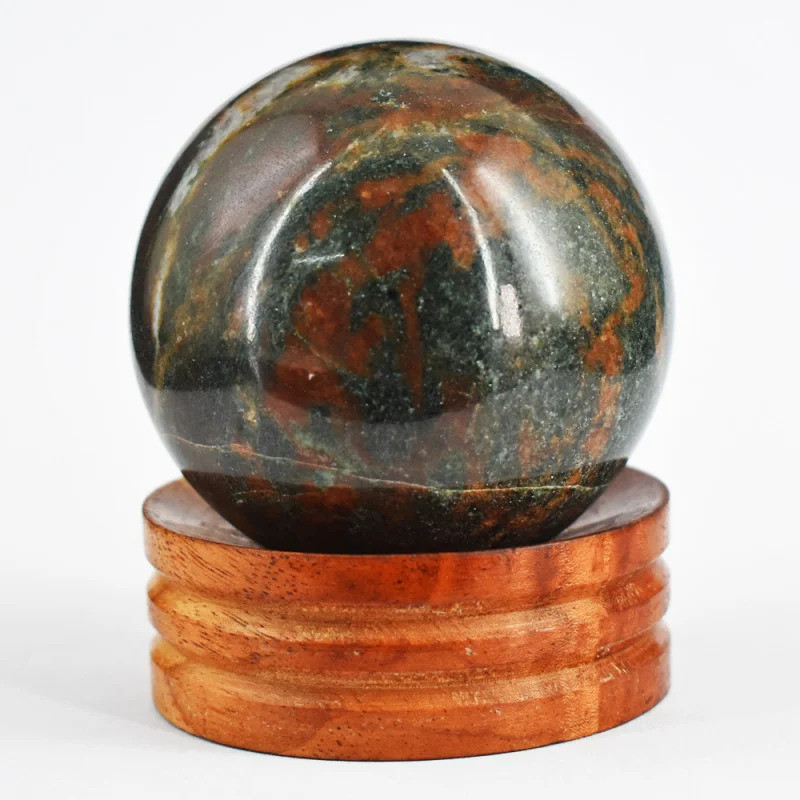 Na gornjoj slici: Kugla za iscjeljivanje od krvavog kamena
Na gornjoj slici: Kugla za iscjeljivanje od krvavog kamena
Duhovni i metafizički značaj
Značenje akvamarina je čišćenje, spokoj i mladost. S druge strane, krvavi kamen simbolizira snagu, izdržljivost i žrtvu.
U energetskom iscjeljivanju, akvamarin je kamen čakre za grlenu čakru, dok krvavi kamen otvara korijensku (baznu) čakru.
Međutim, neka od značenja kamenja rođenja za ožujak se preklapaju:
Hrabrost : Kaže se da oba kamena potiču hrabrost, pri čemu se akvamarin fokusira na samoosnaživanje kako biste hrabro izrekli svoju istinu, a krvavi kamen na fizičku hrabrost kako biste slijedili svoje snove.
Čišćenje : Svaki kamen može ponuditi svojstva čišćenja i pročišćavanja, uklanjajući negativnost i pomažući vam da započnete ispočetka.
Prevladavanje prepreka : Vjeruje se da akvamarin pomaže u suočavanju s emocionalnim preprekama, poput komunikacije u vezi. Za krvavi kamen se kaže da ima zaštitničko djelovanje i pomaže u prevladavanju prepreka na putu do uspjeha.
Astrološki, akvamarin savršeno odgovara osjetljivoj energiji vode Riba (rođenih od 19. veljače do 20. ožujka). U međuvremenu, krvavi kamen odražava vatrenog, ambicioznog Ovna (rođenog od 21. ožujka do 19. travnja) kojim vlada Mars.
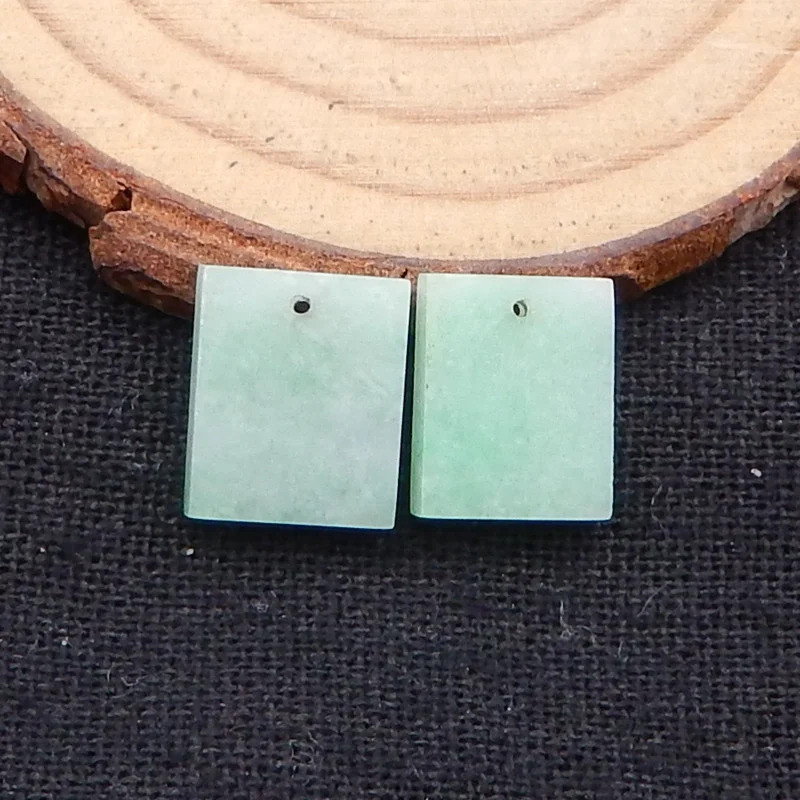 Na gornjoj slici: Rezbarene naušnice od žada
Na gornjoj slici: Rezbarene naušnice od žada
Istraživanje alternativnih kamenja rođenja u ožujku
Nisu li akvamarin i krvavi kamen vaša vibra? Imate i druge mogućnosti!
Mistični kamen rođenja za ožujak, ukorijenjen u drevnoj tibetanskoj astrologiji, je žad , koji obuhvaća slatkoću proljeća s trajnosti Marsa.
Drugi alternativni kamen rođenja za ožujak je jaspis - sličan krvavom kamenu, ali raznovrsniji.
Druga zelena opcija je smaragd , rodni kamen proljeća. Berilna sestra akvamarina, smaragd ima tamniju zelenu boju i također predstavlja novi rast.
Što se tiče cijene, krvavi kamen je puno pristupačniji, a akvamarin može biti skup za neke.
Neke pristupačnije alternative akvamarinovom kamenu za rođenje:
Također se možete odlučiti za sintetički akvamarin, koji se stvara u laboratoriju, ali ima sva ista kemijska i fizikalna svojstva kao i prirodni akvamarin.
 Na gornjoj slici: Kraljica Elizabeta II. nosi svoju akvamarinsku tijaru (opisanu u nastavku) na brazilskom državnom banketu 7. ožujka 2006. | Zasluge za sliku: Agência Brasil, CC-BY-SA-3.0 | Izvorna datoteka
Na gornjoj slici: Kraljica Elizabeta II. nosi svoju akvamarinsku tijaru (opisanu u nastavku) na brazilskom državnom banketu 7. ožujka 2006. | Zasluge za sliku: Agência Brasil, CC-BY-SA-3.0 | Izvorna datoteka
Suvremeni i poznati dizajni nakita
I akvamarin i krvavi kamen predstavljeni su u mnogim jedinstvenim dizajnima nakita u moderno doba.
Akvamarin
Kao kamen za rođenje u ožujku ili jednostavno prekrasan modni dodatak, fasetirani akvamarin blista nježnom bojom, ali snažnim sjajem.
Zaručnički prsteni s akvamarinom prilično su popularni, često postavljeni uz bijelo ili svijetlo kamenje poput bijelih dijamanata .
Neki poznati primjeri nakita od akvamarina uključuju:
Tijara kraljice Elizabete s akvamarinom : Naručila ju je britanska kraljica Elizabeta 1957. godine. Garrard je izradio ovu platinastu tijaru s brazilskim akvamarinom i dijamantima koju joj je 1953. godine poklonio brazilski predsjednik Getúlio Vargas. Guverner Sao Paula donirao je veći akvamarin kako bi zamijenio središnji kamen 1971. godine.
Hirschov privjesak s akvamarinom : Ovaj akvamarin smaragdnog reza od 109,92 karata ugrađen je u privjesak od bijelog zlata sa 118 dijamanata u mikro pavé tehnici. Prije je bio u vlasništvu francuskog cara Luja XV., koji je navodno koristio njegova umirujuća svojstva.
Zaručnički prsten Meghan Markle : Ovaj prsten od žutog zlata ima središnji kamen od 13-karatnog akvamarina smaragdno brušene, svijetloplave boje i manjim dijamantima. Prsten je izradila tvrtka Asprey, a Diani ga je poklonila Lucia Flecha de Lima oko 1996. Dianin sin, princ Harry, poklonio je prsten Meghan Markle, koja ga je nosila na dan njihovog vjenčanja 2018.
Hematit
Za razliku od akvamarina, krvavi kamen je bogat, zemljani i teži kamen s bojama koje odražavaju te osobine.
Rođendanski kamen za ožujak obično se reže u kabošone ili rezbarije, pa su mnogi komadi nakita od krvavog kamena privjesci ili narukvice s perlicama. Međutim, rezbareni ili ukrašeni prsteni od krvavog kamena koji podsjećaju na drevne stilove dobivaju na popularnosti, posebno u prekrasnim zlatnim okvirima.
Krvavi kamen se ne pojavljuje u mnogo kraljevskog nakita, ali jedan kraljevski krvavi kamen (vjerojatno najpoznatiji krvavi kamen) je pečat cara Svetog Rimskog Carstva Rudolfa II. (1552. do 1612.). U muzeju Louvre u Parizu izložen je carev pečat.
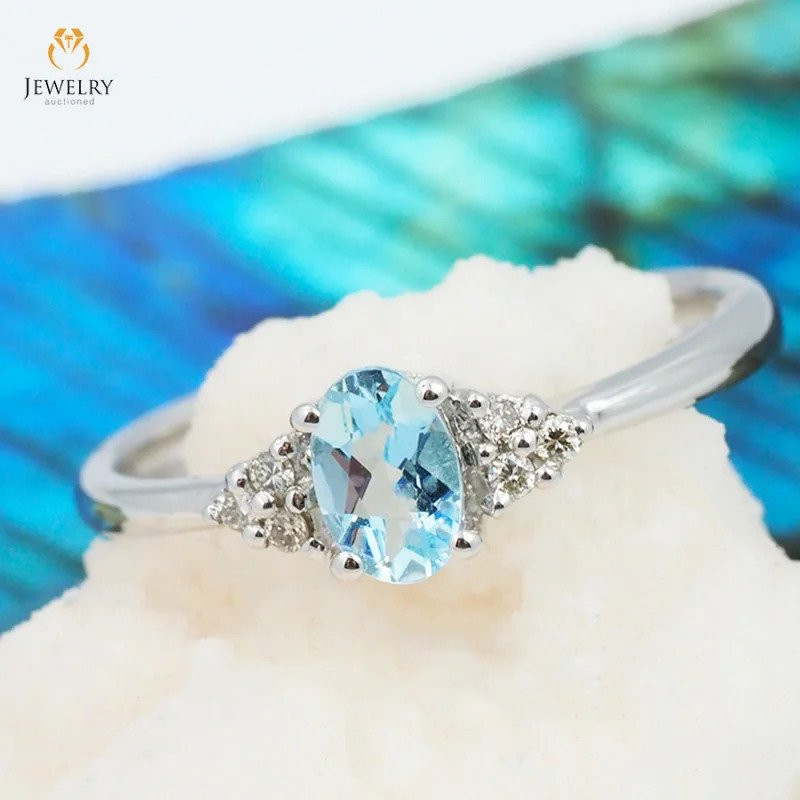
Koji vam kamen rođenja u ožujku odgovara?
Privlači li vas meki, eterični akvamarin ili bogati, zemljani krvavi kamen? Oba kamena rođenja za ožujak nude hrabrost i iscjeljenje, a istovremeno se slažu s asocijacijama mjeseca na nove početke. Bez obzira na to, bilo koji kamen u nakitu s kamenom rođenja za ožujak ima bezvremensku privlačnost!
Pretražite Gemstone Encyclopedia
Povezane aukcije
povezani članci
Svatko ima dragi kamen koji odgovara njegovom horoskopskom znaku. Poznati su i kao vaš Zvjezdani Kamen. Saznajte više o ovom kamenju i saznajte koji je vaš Zvjezdani Kamen.
10th May 2018
Na tržištu postoji toliko mnogo alata za testiranje dragog kamenja, ali koji su glavni alati potrebni za jednostavnu analizu? Pogledajmo četiri alata za testiranje dragog kamenja.
4th Mar 2020
Azotski tretman topaza i kvarca je tretman koji stvara sloj boje preko dragog kamena. Saznajte više o ovom tretmanu i pogledajte naše kamenje u prodaji.
8th May 2018
Najnoviji članci
Rezbarije od palmine slonovače, također nazvane biljna slonovača, prirodna su alternativa slonovoj slonovači, etički ubranoj s palminog oraha južnoameričke palme fitelefas. Saznajte sve o palminoj slonovači u ovom vodiču!
15th Jan 2026
Krizanteme su prirodna čuda s cvjetnim uzorkom bijelog kalcita, celestita ili andaluzita naspram crnog vapnenca ili muljevca.
13th Jan 2026
Sunčev kamen s duginom rešetkom je vrsta feldspata s tri prekrasna optička efekta uzrokovana prisutnošću raznih inkluzija. Njegov vatreno šareni prikaz i uzorak rešetke čine ga rijetkim kolekcionarskim draguljem!
12th Jan 2026
Kategorije članaka
How To's is where you will find helpful articles from gem Rock Auctions on how to cut gemstones, select gemstones and buy gemstones.
9 Članci




